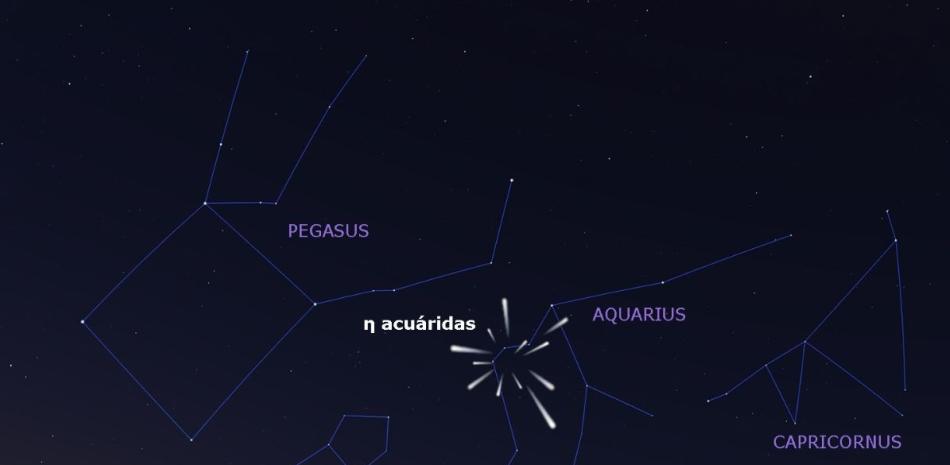This will be a good year to observe Eta AquaritesFirst New MoonOn May 8, the meteor shower will allow the night to continue with darkness at its peak from May 5 to May 7.
The Burnout Etta Aquarits appears every year in between April 19 And On May 28. Their observation is most favorable from locations located in the tropics such as the Canary Islands and the Southern Hemisphere, although they can also be found in the Northern Hemisphere.
Etta Aquarits is associated with Halley's comet, as is the Orianid meteor shower in October. The National Astronomical Observatory (OAN) reports that the meteors of the Eta Aquarids have a high velocity of 40 to 85 meteors per hour and 66 kilometers per second.
For observers in mid-latitudes, the Eta Aquarid rays are above the horizon from four hours after midnight until dawn.
The Wake of Halley's Comet
The Eta Aquarid meteorites are fragments of Comet 1/P Halley. Halley's Comet orbits the Sun every 76 years and was last seen from Earth in 1986.
Every year around this time, Earth passes through a ring full of debris from Halley's Comet. When one of these pieces (or meteorites) comes into contact with Earth's atmosphere, it burns up due to friction with the air, creating the bright glow we know as a meteor or shooting star. Halley's Comet is the source of another meteor shower, the Orionids, which peaks on October 21.
The associated meteor shower appears to have a single focus, from which all shooting stars originate. That point is called “ray” and its location is used to name meteor showers. Thus, Ata Kumbha has their luster in Eta Nakshatra of Kumbha Rasi.





